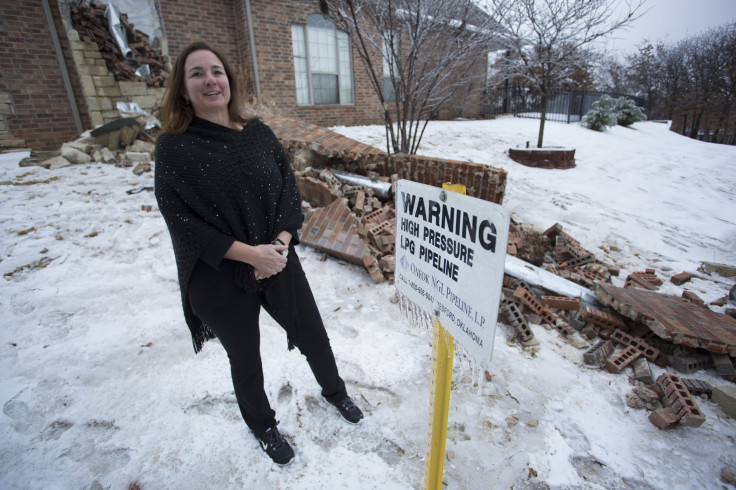Oklahoma Earthquake Its Third-Strongest Ever: US Geological Survey

Oklahoma was struck by a magnitude-5.1 earthquake Saturday morning, the third-strongest quake ever recorded in the state, which has experienced a surge in seismic activity in recent years, the U.S. Geological Survey reported. The quake at 11:07 a.m. local time (12:07 a.m. EST) was followed by several aftershocks in the next 90 minutes, including one with a magnitude of 3.9, the USGS said. The first quake was felt from Missouri to Texas, but no damages or injuries were reported.
Oil fields have boomed in Oklahoma during the past decade thanks to advances in hydraulic fracturing and horizontal drilling, and seismologists have said the state’s frequent earthquakes may be linked to disposal wells that inject saltwater, a natural byproduct of oil and gas work, into deep underground caverns.
Earthquakes in Oklahoma in January led to calls for the governor to make changes to oil and gas drilling regulations.
The quake Saturday was centered about 95 miles northwest of Oklahoma City, and at an estimated depth of 4 miles, the USGS said.
The epicenter is near the East Campbell Gas Field and about 75 miles west of Cushing, Oklahoma, which is one of the largest oil storage hubs in the world and is known as the Pipeline Crossroads of the World.
Only two previous earthquakes in Oklahoma were stronger than Saturday’s, a magnitude-5.6 quake in 2011 and a magnitude-5.5 quake in 1952, said Robert Williams, a geophysicist with USGS.
USGS initially said that Saturday’s quake was probably the second-biggest in the state’s history but then revised it after reviewing records.
The USGS said it was not known whether Saturday’s quake was related to oil and gas production activities.
The state has been recording about two-and-a-half earthquakes a day of magnitude-3 or greater, a rate 600 times higher than observed before 2008, the Oklahoma Geological Survey said in a report last year.
© Copyright Thomson Reuters 2024. All rights reserved.











